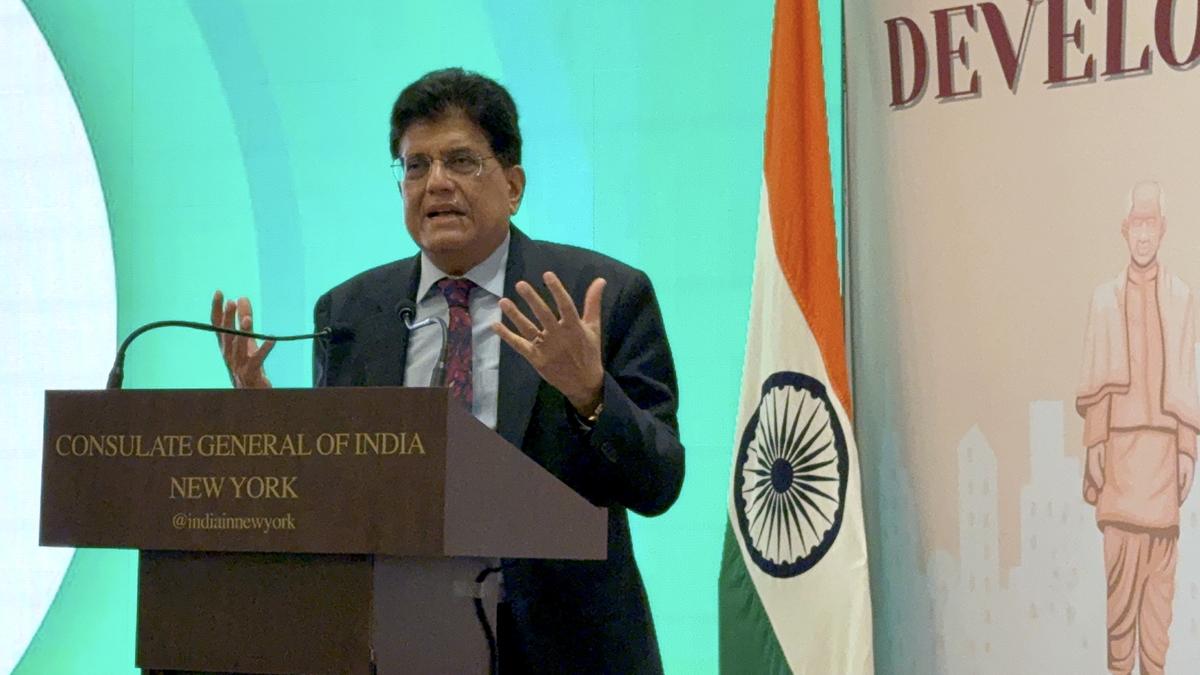Commerce Minister highlights energy security goals and trade diversification amid global pressures

New Delhi, India
India’s energy strategy is undergoing a significant shift as Commerce and Industry Minister Piyush Goyal announced that the country may increase its oil and gas imports from the United States. Speaking during his visit to the US-India Strategic Partnership Forum, Goyal stressed that India is a large energy importer and must diversify sources to meet its long-term energy security goals.
The comments come at a time when global oil prices, geopolitical tensions, and the Russia-Ukraine war have reshaped energy trade flows. The United States, already an important supplier, is expected to play a greater role in India’s energy mix in the coming years.
India’s Growing Energy Needs
India is the third-largest oil consumer in the world, after the US and China. With a population of over 1.4 billion and a fast-growing economy, India’s energy demand is expected to continue rising. Currently, the country imports more than 85% of its crude oil requirements.
While West Asia (Middle East) remains the dominant supplier, India has been actively seeking to diversify its sources. This diversification strategy reduces reliance on any single region, shields the economy from supply shocks, and strengthens diplomatic leverage.
Why the US Matters in India’s Energy Strategy
The United States has emerged as a key player in the global energy market, particularly after the shale oil and gas revolution. India’s interest in US energy imports is driven by several factors:
- Energy Security: Access to stable and diversified supply chains.
- Trade Balance: Higher imports from the US can help reduce India’s trade deficit with Washington, which stood at over $41 billion in 2023.
- Strategic Alignment: Stronger energy trade complements the broader US-India strategic partnership.
- Technology Sharing: Opportunities for collaboration in renewables, clean energy, and LNG infrastructure.
Goyal’s Statement in Context
During his remarks, Piyush Goyal emphasized that India will continue to purchase energy products from multiple sources worldwide, including the US. He acknowledged that US involvement in India’s energy security goals will remain high, ensuring stability and diversity in supply.
Goyal’s comments also reflected the government’s intent to leverage energy trade as a diplomatic tool. Increased energy purchases from the US could potentially smoothen negotiations on issues like tariff reductions, market access, and removal of secondary sanctions affecting Indian companies.
The Role of Secondary Sanctions
One of India’s key demands in trade talks with the US is the removal of secondary sanctions—additional duties imposed on certain Indian products. Goyal, along with External Affairs Minister S. Jaishankar, has been negotiating for greater flexibility on this front.
By boosting oil and gas imports from the US, India aims to create a mutually beneficial framework where both energy and trade concerns are addressed.
Impact on Trade Relations
Increasing oil imports from the US will have multiple implications for the India-US trade relationship:
- Reduced Deficit: Higher purchases of crude oil, LNG, and refined products can narrow India’s trade imbalance with the US.
- Stronger Ties: Energy cooperation will strengthen the strategic partnership, which also includes defense, technology, and supply chain security.
- Negotiation Leverage: India can push for greater market access for its goods and services in return for higher energy imports.
Global Geopolitical Context
The announcement comes amid pressure from the United States and its allies on India to reduce its dependence on Russian crude oil. Since the start of the Russia-Ukraine conflict, India has significantly increased purchases of discounted Russian crude, drawing global scrutiny.
By signaling a willingness to buy more from the US, New Delhi appears to be balancing its diplomatic position—ensuring access to affordable energy while maintaining ties with Washington.
Long-Term Vision: Energy Transition and Clean Energy
Beyond crude oil, India and the US are also exploring collaboration in:
- Liquefied Natural Gas (LNG): The US is one of the world’s top LNG exporters, and India is ramping up its LNG infrastructure.
- Renewables: Joint ventures in solar, wind, and hydrogen energy.
- Technology Sharing: Partnerships in carbon capture, smart grids, and energy storage.
These collaborations align with India’s commitment to achieving net-zero emissions by 2070 while meeting its growing energy demand.
Challenges Ahead
While the outlook is promising, several challenges remain:
- Price Volatility: Global oil prices remain unpredictable due to geopolitical risks.
- Logistical Costs: Transporting oil from the US is more expensive compared to Middle East suppliers.
- Policy Uncertainty: Shifts in US trade and energy policies could affect long-term agreements.
- Balancing Act: India must continue managing ties with both the US and Russia, without compromising on affordable energy access.
Source:
